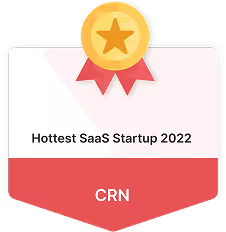
Simple, Affordable, Scalable
for your Business
Built for managed service providers, our scalable plans give your business the tools to win more deals and grow revenue faster.

- Proposal and Quote builder
- Includes $40,000 in free bank transfers
- Email Templates (pre-existing)
- Two Free custom templates included
- 2FA
- AI Writer limited to 3 docs
- Custom Automations (limited to 5)
- Custom Reports (limited to 15)
- Default Role Based Access
( Admin, Manager, User) - Integrations: PSAs, Marketing (CRM), 4 Active Distributor Integrations, Accounting & Payments
- Everything in Expand, plus
- Includes $100,000 in free bank transfers
- Priority Customer support
- Ten custom templates included/month
- Custom Domain
- AI Writer limited to 10 docs
- Unlimited Custom Automations
- Unlimited Custom Reports
- All Role Based Access ( Admin, Manager, User, API User)
- All Integrations in expand + AmazonBusiness
- 10 Approval Rules / per company
- Everything in Growth, plus:
- Custom transaction volume based on adoption
- Enterprise-grade support
- 20 templates included per
month - Personalized onboarding
- Unlimited AI writer
- Unlimited custom automations
- Unlimited custom reports
- All Role Based Access ( Admin, Manager, User, API User)
- All Integrations
- Unlimited approvals
- Priority for custom feature requests
- Early-access beta demos with feedback loop
- Dedicated Customer Success Manager
- Pay by invoice
- Sales rep consultation
- Proposal and Quote builder
- Includes $40,000 in free bank transfers
- Email Templates (pre-existing)
- Two Free custom templates included
- 2FA
- AI Writer limited to 3 docs
- Custom Automations (limited to 5)
- Custom Reports (limited to 15)
- Default Role Based Access
( Admin, Manager, User) - Integrations: PSAs, Marketing (CRM), 4 Active Distributor Integrations, Accounting & Payments
- Everything in Expand, plus
- Includes $100,000 in free bank transfers
- Priority Customer support
- Ten custom templates included/month
- Custom Domain
- AI Writer limited to 10 docs
- Unlimited Custom Automations
- Unlimited Custom Reports
- All Role Based Access ( Admin, Manager, User, API User)
- All Integrations in expand + AmazonBusiness
- 10 Approval Rules / per company
- Everything in Growth, plus:
- Custom transaction volume based on adoption
- Enterprise-grade support
- 20 templates included per
month - Personalized onboarding
- Unlimited AI writer
- Unlimited custom automations
- Unlimited custom reports
- All Role Based Access ( Admin, Manager, User, API User)
- All Integrations
- Unlimited approvals
- Priority for custom feature requests
- Early-access beta demos with feedback loop
- Dedicated Customer Success Manager
- Pay by invoice
- Sales rep consultation
- Proposal and Quote builder
- Includes $40,000 in free bank transfers
- Email Templates (pre-existing)
- Two Free custom templates included
- 2FA
- AI Writer limited to 3 docs
- Custom Automations (limited to 5)
- Custom Reports (limited to 15)
- Default Role Based Access
( Admin, Manager, User) - Integrations: PSAs, Marketing (CRM), 4 Active Distributor Integrations, Accounting & Payments
- Everything in Expand, plus
- Includes $100,000 in free bank transfers
- Priority Customer support
- Ten custom templates included/month
- Custom Domain
- AI Writer limited to 10 docs
- Unlimited Custom Automations
- Unlimited Custom Reports
- All Role Based Access ( Admin, Manager, User, API User)
- All Integrations in expand + AmazonBusiness
- 10 Approval Rules / per company
- Everything in Growth, plus:
- Custom transaction volume based on adoption
- Enterprise-grade support
- 20 templates included per
month - Personalized onboarding
- Unlimited AI writer
- Unlimited custom automations
- Unlimited custom reports
- All Role Based Access ( Admin, Manager, User, API User)
- All Integrations
- Unlimited approvals
- Priority for custom feature requests
- Early-access beta demos with feedback loop
- Dedicated Customer Success Manager
- Pay by invoice
- Sales rep consultation
- Proposal and Quote builder
- Includes $40,000 in free bank transfers
- Email Templates (pre-existing)
- Two Free custom templates included
- 2FA
- AI Writer limited to 3 docs
- Custom Automations (limited to 5)
- Custom Reports (limited to 15)
- Default Role Based Access
( Admin, Manager, User) - Integrations: PSAs, Marketing (CRM), 4 Active Distributor Integrations, Accounting & Payments
- Everything in Expand, plus
- Includes $100,000 in free bank transfers
- Priority Customer support
- Ten custom templates included/month
- Custom Domain
- AI Writer limited to 10 docs
- Unlimited Custom Automations
- Unlimited Custom Reports
- All Role Based Access ( Admin, Manager, User, API User)
- All Integrations in expand + AmazonBusiness
- 10 Approval Rules / per company
- Everything in Growth, plus:
- Custom transaction volume based on adoption
- Enterprise-grade support
- 20 templates included per
month - Personalized onboarding
- Unlimited AI writer
- Unlimited custom automations
- Unlimited custom reports
- All Role Based Access ( Admin, Manager, User, API User)
- All Integrations
- Unlimited approvals
- Priority for custom feature requests
- Early-access beta demos with feedback loop
- Dedicated Customer Success Manager
- Pay by invoice
- Sales rep consultation
- Proposal and Quote builder
- Includes $40,000 in free bank transfers
- Email Templates (pre-existing)
- Two Free custom templates included
- 2FA
- AI Writer limited to 3 docs
- Custom Automations (limited to 5)
- Custom Reports (limited to 15)
- Default Role Based Access
( Admin, Manager, User) - Integrations: PSAs, Marketing (CRM), 4 Active Distributor Integrations, Accounting & Payments
- Everything in Expand, plus
- Includes $100,000 in free bank transfers
- Priority Customer support
- Ten custom templates included/month
- Custom Domain
- AI Writer limited to 10 docs
- Unlimited Custom Automations
- Unlimited Custom Reports
- All Role Based Access ( Admin, Manager, User, API User)
- All Integrations in expand + AmazonBusiness
- 10 Approval Rules / per company
- Everything in Growth, plus:
- Custom transaction volume based on adoption
- Enterprise-grade support
- 20 templates included per
month - Personalized onboarding
- Unlimited AI writer
- Unlimited custom automations
- Unlimited custom reports
- All Role Based Access ( Admin, Manager, User, API User)
- All Integrations
- Unlimited approvals
- Priority for custom feature requests
- Early-access beta demos with feedback loop
- Dedicated Customer Success Manager
- Pay by invoice
- Sales rep consultation
- Proposal and Quote builder
- Includes $40,000 in free bank transfers
- Email Templates (pre-existing)
- Two Free custom templates included
- 2FA
- AI Writer limited to 3 docs
- Custom Automations (limited to 5)
- Custom Reports (limited to 15)
- Default Role Based Access
( Admin, Manager, User) - Integrations: PSAs, Marketing (CRM), 4 Active Distributor Integrations, Accounting & Payments
- Everything in Expand, plus
- Includes $100,000 in free bank transfers
- Priority Customer support
- Ten custom templates included/month
- Custom Domain
- AI Writer limited to 10 docs
- Unlimited Custom Automations
- Unlimited Custom Reports
- All Role Based Access ( Admin, Manager, User, API User)
- All Integrations in expand + AmazonBusiness
- 10 Approval Rules / per company
- Everything in Growth, plus:
- Custom transaction volume based on adoption
- Enterprise-grade support
- 20 templates included per
month - Personalized onboarding
- Unlimited AI writer
- Unlimited custom automations
- Unlimited custom reports
- All Role Based Access ( Admin, Manager, User, API User)
- All Integrations
- Unlimited approvals
- Priority for custom feature requests
- Early-access beta demos with feedback loop
- Dedicated Customer Success Manager
- Pay by invoice
- Sales rep consultation
- Proposal and Quote builder
- Includes $40,000 in free bank transfers
- Email Templates (pre-existing)
- Two Free custom templates included
- 2FA
- AI Writer limited to 3 docs
- Custom Automations (limited to 5)
- Custom Reports (limited to 15)
- Default Role Based Access
( Admin, Manager, User) - Integrations: PSAs, Marketing (CRM), 4 Active Distributor Integrations, Accounting & Payments
- Everything in Expand, plus
- Includes $100,000 in free bank transfers
- Priority Customer support
- Ten custom templates included/month
- Custom Domain
- AI Writer limited to 10 docs
- Unlimited Custom Automations
- Unlimited Custom Reports
- All Role Based Access ( Admin, Manager, User, API User)
- All Integrations in expand + AmazonBusiness
- 10 Approval Rules / per company
- Everything in Growth, plus:
- Custom transaction volume based on adoption
- Enterprise-grade support
- 20 templates included per
month - Personalized onboarding
- Unlimited AI writer
- Unlimited custom automations
- Unlimited custom reports
- All Role Based Access ( Admin, Manager, User, API User)
- All Integrations
- Unlimited approvals
- Priority for custom feature requests
- Early-access beta demos with feedback loop
- Dedicated Customer Success Manager
- Pay by invoice
- Sales rep consultation
- Proposal and Quote builder
- Includes $40,000 in free bank transfers
- Email Templates (pre-existing)
- Two Free custom templates included
- 2FA
- AI Writer limited to 3 docs
- Custom Automations (limited to 5)
- Custom Reports (limited to 15)
- Default Role Based Access
( Admin, Manager, User) - Integrations: PSAs, Marketing (CRM), 4 Active Distributor Integrations, Accounting & Payments
- Everything in Expand, plus
- Includes $100,000 in free bank transfers
- Priority Customer support
- Ten custom templates included/month
- Custom Domain
- AI Writer limited to 10 docs
- Unlimited Custom Automations
- Unlimited Custom Reports
- All Role Based Access ( Admin, Manager, User, API User)
- All Integrations in expand + AmazonBusiness
- 10 Approval Rules / per company
- Everything in Growth, plus:
- Custom transaction volume based on adoption
- Enterprise-grade support
- 20 templates included per
month - Personalized onboarding
- Unlimited AI writer
- Unlimited custom automations
- Unlimited custom reports
- All Role Based Access ( Admin, Manager, User, API User)
- All Integrations
- Unlimited approvals
- Priority for custom feature requests
- Early-access beta demos with feedback loop
- Dedicated Customer Success Manager
- Pay by invoice
- Sales rep consultation
- Proposal and Quote builder
- Includes $40,000 in free bank transfers
- Email Templates (pre-existing)
- Two Free custom templates included
- 2FA
- AI Writer limited to 3 docs
- Custom Automations (limited to 5)
- Custom Reports (limited to 15)
- Default Role Based Access
( Admin, Manager, User) - Integrations: PSAs, Marketing (CRM), 4 Active Distributor Integrations, Accounting & Payments
- Everything in Expand, plus
- Includes $100,000 in free bank transfers
- Priority Customer support
- Ten custom templates included/month
- Custom Domain
- AI Writer limited to 10 docs
- Unlimited Custom Automations
- Unlimited Custom Reports
- All Role Based Access ( Admin, Manager, User, API User)
- All Integrations in expand + AmazonBusiness
- 10 Approval Rules / per company
- Everything in Growth, plus:
- Custom transaction volume based on adoption
- Enterprise-grade support
- 20 templates included per
month - Personalized onboarding
- Unlimited AI writer
- Unlimited custom automations
- Unlimited custom reports
- All Role Based Access ( Admin, Manager, User, API User)
- All Integrations
- Unlimited approvals
- Priority for custom feature requests
- Early-access beta demos with feedback loop
- Dedicated Customer Success Manager
- Pay by invoice
- Sales rep consultation
- Proposal and Quote builder
- Includes $40,000 in free bank transfers
- Email Templates (pre-existing)
- Two Free custom templates included
- 2FA
- AI Writer limited to 3 docs
- Custom Automations (limited to 5)
- Custom Reports (limited to 15)
- Default Role Based Access
( Admin, Manager, User) - Integrations: PSAs, Marketing (CRM), 4 Active Distributor Integrations, Accounting & Payments
- Everything in Expand, plus
- Includes $100,000 in free bank transfers
- Priority Customer support
- Ten custom templates included/month
- Custom Domain
- AI Writer limited to 10 docs
- Unlimited Custom Automations
- Unlimited Custom Reports
- All Role Based Access ( Admin, Manager, User, API User)
- All Integrations in expand + AmazonBusiness
- 10 Approval Rules / per company
- Everything in Growth, plus:
- Custom transaction volume based on adoption
- Enterprise-grade support
- 20 templates included per
month - Personalized onboarding
- Unlimited AI writer
- Unlimited custom automations
- Unlimited custom reports
- All Role Based Access ( Admin, Manager, User, API User)
- All Integrations
- Unlimited approvals
- Priority for custom feature requests
- Early-access beta demos with feedback loop
- Dedicated Customer Success Manager
- Pay by invoice
- Sales rep consultation

Compare Plans
See what's included in each plan to make the best choice for your business
Trusted by 4000+ MSPs Worldwide

















Need something Tailored?
Your business is unique, your pricing should be too. Let’s create a package that fits your team’s sales, quoting, and payment needs.

What's new at Zomentum?
Explore the latest features, improvements, and updates across Zomentum Grow and Zomentum Payments.
Trusted by Top MSPs, Backed by Industry Recognition











Frequently
Asked Questions
Zomentum acts as a complete revenue platform that not only allows you to sign proposals and contracts but also allows you to collect upfront payments and setup recurring payments, from the same platform, such that you can go from quoting, signing and getting paid.
Yes, you can send proposals without using the document editor. The editor helps you craft stunning, responsive proposals, you can also upload your documents in various formats, such as Word and PDF.
With Zomentum, you can add images or notes to your proposals that details the reasons for your sales. You can also include merge tags and set up workflows for automated, personalized follow-ups.
For businesses in the US and UK, Zomentum Payments is unmatched. It offers zero platform fees, supports ACH and Direct Debit, and integrates perfectly with QuickBooks and Xero. Companies choose Zomentum because of the convenience and efficiency it brings to their businesses.
Yes, Zomentum integrates seamlessly with QuickBooks and Xero, ensuring your financial records stay perfectly organized.
